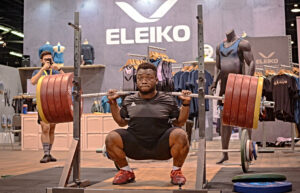
Wear Lifting Shoes to Squat Deep
Long before the Kneesovertoes Guy, Charles R. Poliquin was preaching about the benefits of full squats. He believed that heavy, hamstrings-covering-calves provided maximum strength and growth stimulation. He also thought these squats would help prevent muscle imbalances that increased the risk of chronic knee pain, particularly from conditions such as patella tendonitis. But what if you can’t squat low?
Anatomical restrictions aside, the Strength Sensei believed that calve tightness was one reason athletes had trouble squatting deep. He would place a thin board or weight plates under the heels to elevate the heels to determine if tight calves were the problem.
Elevating the heels inclines the shins forward to help you maintain a more upright position and squat lower. This design also helps align the ankle and foot bones to maintain optimal knee alignment.
Besides stretching the calves, the Strength Sensei recommended investing in weightlifting shoes. These shoes have an elevated heel, about one inch, and often have a non-slip surface so you can focus on putting maximum effort into the heavy sets. Lifting shoes are sturdy, providing a stable platform to squat – running shoes often encourage the foot to collapse inward.
BOTTOM LINE: Squat lower with optimal technique by investing in weightlifting shoes.
— Photo by Ryan Paiva, LiftingLife.com
